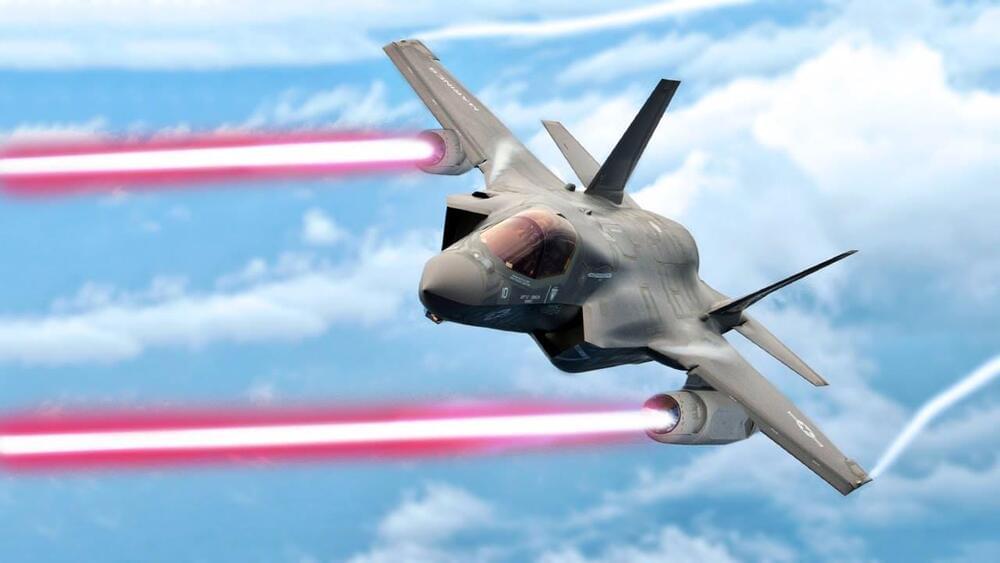Aug 15, 2022
The US Tests Deadly LASER Weapon on Its Fighter Jets
Posted by Dan Breeden in category: military
The three largest aerospace companies in the world – Boeing, Lockheed Martin, and Grumman Northrop – were…

The three largest aerospace companies in the world – Boeing, Lockheed Martin, and Grumman Northrop – were…
Over the past few decades, computers have seen dramatic progress in processing power; however, even the most advanced computers are relatively rudimentary in comparison with the complexities and capabilities of the human brain.
Researchers at the U.S. Army Combat Capabilities Development Command’s Army Research Laboratory say this may be changing as they endeavor to design computers inspired by the human brain’s neural structure.
As part of a collaboration with Lehigh University, Army researchers have identified a design strategy for the development of neuromorphic materials.
I heard they changed it to 80085.
By Wes O’Donnell Managing Editor, InMilitary.com and InCyberDefense.com. U.S. Army and U.S. Air Force Veteran. Speaker and Veteran Advocate.
Some say that truth is often stranger than fiction. According to a 2004 memo by Dr. Bruce Blair, a former Minuteman missile launch control officer, the U.S. Strategic Air Command (SAC) once intentionally set the launch codes at all Minuteman nuclear missile silos in the U.S. to a series of eight zeroes.
Continue reading “For 15 Years, America’s Secret Nuclear Launch Codes Were ‘00000000’” »
In 1903, the Wright brothers invented the first successful airplane. By 1914, just over a decade after its successful test, aircraft would be used in combat in World War I, with capabilities including reconnaissance, bombing and aerial combat. This has been categorized by most historians as a revolution in military affairs. The battlefield, which previously included land and sea, now included the sky, permanently altering the way wars are fought. With the new technology came new strategy, policy, tactics, procedures and formations.
Twenty years ago, unmanned aircraft systems (UASs) were much less prevalent and capable. Today, their threat potential and risk profile have increased significantly. UASs are becoming increasingly more affordable and capable, with improved optics, greater speed, longer range and increased lethality.
The U.S. has long been a proponent of utilizing unmanned aircraft systems, with the MQ-9 Reaper and MQ-1 Predator excelling in combat operations, and smaller squad-based UASs being fielded, such as the RQ-11 Raven and the Switchblade. While the optimization of friendly UAS capability can yield great results on the battlefield, adversarial use of unmanned aircraft systems can be devastating.

US laser tank SHOCKED russians /
The American robots are here and they’re better than the Russian military in many ways. Video after video, we’ve seen Russian tanks roasting from Ukrainian fire — events that, in theory, wouldn’t happen if the Russian military had the robotic tanks that the US now has. These robotic tanks could change modern warfare as we know it and reduce casualty rates to the lowest in history, particularly the laser-guided-weapon-wielding M113 tank and every tank born of the Army’s Robotic Combat Vehicle program — as those have been in the news lately for all the right reasons.
Taiwan’s dominance of the semiconductor manufacturing market has made it a vital geopolitical interest for the US.
Taiwan dominates the world’s supply of computer chips — no wonder the US is worried.
One aspect of Nancy Pelosi’s trip to Taiwan that has been largely overlooked is her meeting with Mark Lui, chairman of the Taiwan Semiconductor Manufacturing Corporation (TSMC). Pelosi’s trip coincided with US efforts to convince TSMC — the world’s largest chip manufacturer, on which the US is heavily dependent — to establish a manufacturing base in the US and to stop making advanced chips for Chinese companies.
Continue reading “How Taiwan’s tiny chips are quietly shaping US geopolitics” »
WASHINGTON – The Defense Advanced Research Projects Agency on May 4 issued a solicitation for proposals for the next phase of a demonstration of a nuclear powered spacecraft.
The project, called Demonstration Rocket for Agile Cislunar Operations (DRACO), started over a year ago when DARPA selected a preliminary design for a rocket engine reactor developed by General Atomics, and chose two conceptual spacecraft designs by Blue Origin and Lockheed Martin.
The next phases of the program will focus on the design, development, fabrication and assembly of a nuclear thermal rocket engine. DARPA will conduct a “full and open competition” so this opportunity is not limited to the companies that participated in the first phase, a spokesperson told SpaceNews. Proposals are due Aug. 5.

The technology, even the interceptor systems already exists; We just need to integrate them. See my survey of the existing interceptors and how we could use them in conjunction with space launch rockets, such as a derivative of the Ares I-X which has already flown! Listen as I explain how many of these various interceptors you can fly in massive drone swarms from Ares I style boosters and larger variants.
Awesome deals for long term food supplies for those long missions to deep space (or prepping in case your spaceship crashes: See the Special Deals at My Patriot Supply: www.PrepWithGreg.com.
Continue reading “Stop Sarmat (Satan II), Hypersonics — All Missiles — the Details” »

Outer space is already an essential part of America’s ability to fight wars. Our military depends on satellites for many things, such as communications, reconnaissance and targeting information. See more in Season 4, Episode 8, “Space Wars.”
#TheUniverse.
Continue reading “The Universe: Space Weapons Prepare for War (S4, E8) | Full Episode | History” »
